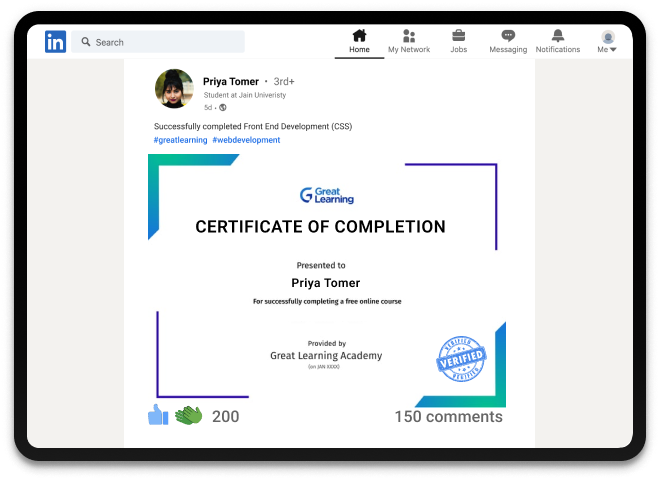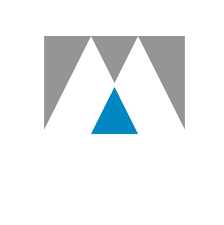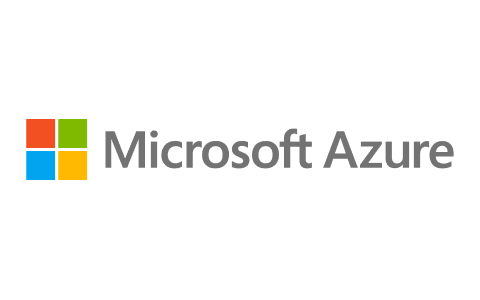Mongodb Tutorial
Learn Mongodb from basics in this free online training. Mongodb course is taught hands-on by experts. Learn all about SQL, NoSQL, Databases & lot more in depth. Best for beginners. Start now!
What you learn in Mongodb Tutorial ?
About this Free Certificate Course
MongoDB is a powerful document-oriented database system, and this course helps you learn MongoDB basics. This MongoDB for beginners course introduces you to it and helps you understand NoSQL and its need in DBMS. You will learn about the SQL and NoSQL features and learn to install MongoDB on your system. CRUD operations are the most significant part of any database, and you will learn about them and their syntax with appropriate code demonstrations. Lastly, you will understand the role of queries and criteria in the database and its operation in MongoDB. Enroll in this MongoDB tutorial for beginners and earn a free certificate.
Learn advanced software skills through Great Learning's Best Software Engineering Courses. Enroll in the program of your interest and flaunt your achievement and skill through a course completion certificate.
Course Outline
MongoDB is an open-source and free cross-platform document-oriented database program. This module briefs you on the role of DBMS and introduces you to MongoDB.
In this module, you will understand the limitations of RDBMS and learn about NoSQL and its need.
This module contains an in-depth explanation of the various pros and cons of SQL and NoSQL.
This module is a guide for installing and configuring MongoDB on your system.
In this module, you will focus on how to create a database and delete a database with code examples.
With this course, you get
Free lifetime access
Learn anytime, anywhere
Completion Certificate
Stand out to your professional network
2.0 Hours
of self-paced video lectures
Frequently Asked Questions
What are the prerequisites required to learn this MongoDB course?
There is no prior requirement to enroll in this beginner's free course.
How long does it take to complete this free MongoDB for beginners course?
This MongoDB tutorial contains 2 hours of self-paced video content.
Will I have lifetime access to the free course?
Yes, you can revisit this free MongoDB tutorial any time.
What are my next learning options after this MongoDB tutorial for beginners?
You can enroll in Great Learning's IIT Roorkee Full Stack Developer Course to learn advanced software implementations.
Is it worth learning the MongoDB course?
Yes, learning MongoDB is definitely worth your time. The benefits of MongoDB over traditional relational databases are well documented, and the technology is widely adopted in the industry. Plus, learning MongoDB will give you a valuable skill that will make you more marketable to employers.
Success stories
Can Great Learning Academy courses help your career? Our learners tell us how.And thousands more such success stories..
Related IT & Software Courses
Popular Upskilling Programs
Explore new and trending free online courses
Relevant Career Paths >
Other IT & Software tutorials for you
MongoDB Tutorial
Why Learn MongoDB?
MongoDB uses a schema-less mechanism to organize data for you, saving you time and potential headaches. Because data is not prioritized in the same way that it would be in a relational database, you may get right to coding. MongoDB is gaining popularity among developers and businesses as a database system with more capabilities and flexibility than many others on the market.
Because it is a NoSQL database, there are numerous reasons to learn MongoDB. Because of these factors, MongoDB has grown in popularity around the world.
These are some of the reasons for MongoDB's popularity:
-
Aggregation Framework
-
BSON Format
-
Sharding
-
Ad-hoc Query
-
Capped Collection
-
Indexing
-
File Storage
-
Replication
-
MongoDB Management Service (MMS)
MongoDB Advantages
There is a slew of compelling reasons to learn MongoDB and put it to work on your own projects.
1. Free to use
This is self-evident. You can study MongoDB and save money instead of paying for database software that is less flexible and has a smaller community. With the free trial edition of MongoDB Atlas, there's also a free version in the cloud. The program is also clear and easy to adapt, allowing developers to customize it to their own needs.
2. Makes complex tasks easy for developers
To fulfill the complicated development requirements of modern apps, MongoDB's document-oriented model may be used with a variety of programming languages. While it is capable of handling complex tasks, it is not difficult to learn, and most developers pick it up fast.
3. Flexible and future-proof
Using a rigid database system forces you to store your data in a specific format and frequently ties you to the vendor with which you started. Because of MongoDB's versatility, this isn't an issue, and you can utilize different data structures whenever you choose. Here's where you can learn more about MongoDB's architecture.
4. Already used at large companies
MongoDB is already in use at a number of significant enterprises in a variety of industries. Gap, eBay, Adobe, Google, Verizon, Intuit, and Business Insider are among them. Developers who understand MongoDB now will have a leg up on the competition as more businesses use the software.
5. Usable in the cloud
MongoDB has a SaaS version called Atlas that makes developing and deploying in the cloud a breeze. In their Getting Started tutorial, you'll learn how to register an account, launch a cluster, and input data into Atlas.
6. No need for web hosting and application services
They have a serverless platform called Stitch that eliminates the requirement for web hosting and application services, demonstrating MongoDB's adaptability yet again. You may use the Stitch SDK to run JavaScript code, retrieve Atlas data, authenticate end-users, and more.
MongoDB Features
1. Ad-hoc queries for optimized, real-time analytics
It is impossible to predict all of the queries that will be run by end-users while building a database structure. An ad hoc query is a one-time command that depends on the value of a variable. Depending on the variables in question, the outcome of an ad hoc query may alter each time it is run.
At scale, when thousands to millions of factors must be evaluated, optimizing the way ad-hoc queries are handled can make a big impact. MongoDB, a document-oriented, flexible schema database, is the cloud database platform of choice for enterprise applications that demand real-time analytics for this reason. The performance boost from ad-hoc query capabilities, which allows developers to update ad-hoc queries in real-time, can be game-changing.
Field queries, range queries, and regular expression searches are all supported by MongoDB. User-defined functions can be accounted for in queries that return specified fields. Because MongoDB indexes BSON documents and employs the MongoDB Query Language, this is possible (MQL).
2. Indexing appropriately for better query executions
Indexing is the most common problem that many technical support teams neglect to address with their customers. Indexes are designed to improve search speed and performance when done correctly. Failure to properly specify appropriate indices can and often does result in a slew of accessibility concerns, including query execution and load balancing issues.
A database without the necessary indices is forced to scan documents one by one to find the ones that match the query statement. However, if a proper index exists for each query, the server may perform user requests more efficiently. MongoDB provides a wide range of indices and features, including language-specific sort orders, to accommodate complex dataset access patterns.
MongoDB indices, for example, can be built on-demand to support real-time, constantly changing query patterns and application requirements. They can also be declared on any field, even those nested within arrays, in any of your documents.
3. Replication for better data availability and stability
When your data is stored in a single database, it is vulnerable to a variety of failures, including server crashes, service outages, and even hardware failure. Any of these occurrences would make it nearly impossible to access your data.
By establishing additional servers for disaster recovery and backup, replication allows you to avoid these risks. Horizontal scaling over numerous servers that contain the same data (or shards of the same data) means that data availability and stability are considerably improved. Replication, of course, aids in load balancing. The load can be dispersed evenly between servers when several users access the same data.
Replica sets are used in MongoDB for this reason. All write actions are accepted by a primary server or node, which then replicates the data among secondary servers. In the event that the primary server fails catastrophically, any of the secondary servers can be chosen to become the new primary node. If the previous primary node returns to service, it will function as a backup server for the new primary node.
4. Load Balancing
At the end of the day, proper load balancing for developing corporate applications remains one of the holy grails of large-scale database management. A noticeable (and much-appreciated) change in performance can be achieved by properly distributing millions of client requests among hundreds or thousands of servers.
MongoDB, fortunately, provides large-scale load balancing via horizontal scaling capabilities like replication and sharding. With best-in-class concurrency control and locking mechanisms that maintain data consistency, the platform can handle several concurrent read and write requests for the same data. There’s no prerequisite to adding an external load balancer —MongoDB safeguards that each and every user has a consistent view and quality experience with the data they need to access.
When should you use MongoDB?
MongoDB is a general-purpose database that is used in a variety of industries to support applications (e.g., telecommunications, gaming, finances, healthcare, and retail). Because it tackles long-standing difficulties in data management and software development, MongoDB has found a home in a variety of enterprises and roles. MongoDB is commonly used in the following scenarios:
-
Integrating large amounts of diverse data: If you're combining tens or hundreds of data sources, the document model's flexibility and power can help you generate a single cohesive view in ways that other databases can't. When previous databases have failed, MongoDB has been successful in bringing such initiatives to life.
-
Describing complex data structures that evolve: Document databases allow documents to be embedded to describe hierarchical structures and to accept data alterations over generations of documents. Geospatial data formats, for example, are well supported. As a result, the repository is more durable and does not need to be redesigned every time something changes.
-
Delivering data in high-performance applications: MongoDB's scale-out design can handle massive amounts of data and transactions on massive databases. Because of the way it was created, MongoDB offers a clear path to scalability, unlike other databases that either cannot support such size or can only do so with large amounts of engineering and additional components. MongoDB comes with built-in scalability.
-
Supporting hybrid and multi-cloud applications: MongoDB can be installed and run as installed software or as MongoDB Atlas, a database-as-a-service solution, on a desktop, a massive cluster of computers in a data centre, or in the public cloud. MongoDB supports any configuration now and in the future if you have apps that need to run wherever they make sense.
-
Supporting agile development and collaboration: Developers are in charge of the data in document databases. Data is transformed into developer-friendly code. This is not the same as forcing developers to utilize a bizarre system that necessitates the usage of a specialist. Document databases also enable the structure of data to evolve as needs are better recognized. Collaboration and governance might enable one team to manage one element of a document while another manages another.
About This Course
If you want to learn MongoDB online, this is an ideal place to kick start with. The presentation is 2.0 hours long and is presented in video format along with one quiz.
MongoDB is a flexible, scalable document database contributing powerful storage and analytics capabilities, and it’s also free.
MongoDB is a document-oriented, NoSQL database that differs from standard relational databases. Tables, rows, and columns are used to store data in relational systems like Oracle and MySQL. MongoDB, on the other hand, stores data in JSON-like documents, allowing users to interact with a variety of data formats. The great thing about this is that you aren't stuck working with the same fields or data structures for the rest of your life.
Introduction to MongoDB, Introduction to NoSQL, Difference between SQL and NoSQL, Steps to download and install MongoDB, Creating Databases, Collections, and Documents using MongoDB and CRUD operations are all covered in detail in the MongoDB Tutorial course curriculum. You will receive a certificate from Great Learning upon completion, which you can use on your LinkedIn page, printed resumes and CVs, and other documents.
Enroll in this free beginner MongoDB Tutorial certificate course right away and get started learning.



















































